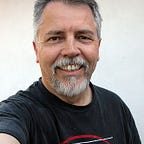Making useful photographs
What does it mean when hundreds of thousands of one’s photos appear in articles, essays and posts all over the Web—and one hasn’t been paid for them?
In my case, it means they’ve all proven useful. That’s why I posted the originals in the first place, licensing them to require only attribution. It’s also an example of why I’m not in this for the money.
For an example of how this works, take Lithium, a metal in the periodic table. Lithium is making news these days because it’s both scarce and required for the batteries of electric and hybrid vehicles. At issue especially is how and where lithium is extracted from the Earth. As Ivan Penn and Eric Lipton put it in The Lithium Gold Rush: Inside the Race to Power Electric Vehicles (6 May in The New York Times), extraction “might not be very green.”
But it is blue. Or turquoise. Or aqua. Or whatever colors you see in the photo above.
I took that shot on a 2010 flight over Nevada. Looking out the window (which I always do, camera in hand), it’s hard to miss lakes of bright colors on the desert floor, looking like stained glass windows into the Earth. I didn’t know at the time that the puddles were lithium, but I did know they’d be useful when I published them, along with whatever information a little bit of research would reveal about them. After I did that research, I put 17 photos in an album on Flickr titled Lithium Mines in Nevada and added the same set to another album called Mines and Mining, which is now 329 photos long.
Also on that flight, which produced 130 photos in an album called 2010_08_06 rno-phx-bos, I captioned and tagged the Shoshone Mountains, Yucca Flat (with “subsidence craters” over underground nuclear bomb explosions), the Nevada Test Site, (where hundreds of atomic bomb tests took place, among other interesting things), “Doom Town” on Frenchman Lake, Broom Lake in Area 51, Creech Air Force Base (from which military drones are remotely controlled), the Grand Canyon, and Buffalo at night.
All those links go to photos of mine that have appear in Wikipedia articles. None are especially artistic. In fact, most of them make me cringe today because I hadn’t mastered Photoshop when I posted them in the first place. Worse, back then I shot only .jpgs, rather than RAW photos, which means I can’t go back and improve them. But all are useful, especially to writers and publications covering the topic of lithium mining. For example, my photos of those lithium lakes appear in—
- Biden clean energy talk fuels mining reform bills in E&E
- What an ancient lake in Nevada reveals about the future of tech in Fast Company
- TRANSITION TO ELECTRIC CARS NEED NOT DEMAND A TOXIC LITHIUM LEGACY, in Energy Mix
- Leading the Charge…To Lithium And Beyond? in Nevada Forward
- Lithium: Commodity Overview in Geology for Investors
- Mining: An Eco-Price for Fighting Climate Change, in Peer.org.
- Lithium mining innovators secure investment from Bill Gates-led fund in Mining Technology
- The Path to Lithium Batteries: Friend or Foe? in Treehugger
- Action Alert: Proposed Lithium Mine in Panamint Valley, in Friends of Inyo
- Snow Lake Resources’ IPO Arrives As Intriguing But Speculative Green EV Lithium Stock, in Data Driven Inverstor
- A secure battery metals supply chain runs through Nevada and is critical to America’s energy security, in Nevada Independent
- Panamint Valley at Risk as Lithium Pushes, in UPS Battery Center
And get this: those are just the first twelve among 23,200 results in a search for my name + lithium. Those results are also just from pubs that have bothered to obey my license. Countless others don’t.
Google also finds 57,400 results for my name + mining. On top of those, there are also thousands of results for my name + potash, river, geology, mining, mountains, dunes, desert, beach, ocean, hebrides, glacier, and other landforms I’ve photographed from above.
That’s on top of more than 1600 photos of mine parked in Wikimedia Commons, of which many (perhaps most) are already in Wikipedia (sometimes in multiple language editions or articles within them) or on their way there.
And those are just a few of the many subjects I’ve shot, posted, and annotated to make them useful to the world. That’s why I’m guessing the number of my photos that are actually being used is in the hundreds of thousands by now.
This is key: I have placed none of those photos in any of those places. I just put them where they can easily be found and put to use. For example, when I shot Thedford, Nebraska, I knew somebody would find the photo and put it in Wikipedia.
It’s interesting to me that most of my photographs are of people, and that these photos donated to the world are actually a small percentage of all the shooting I’ve done over many decades.
But apparently, my main calling as a photographer is to push useful photos to the edge of the public domain and to describe and tag them in ways that make them easy for researchers and journalists to find and use. And so far that has been a very successful strategy.
I recommend that other photographers do the same. It’ll do the world some good.
An earlier version of this was published at https://blogs.harvard.edu on May 19, 2021. Last updated on January 15, 2022.
